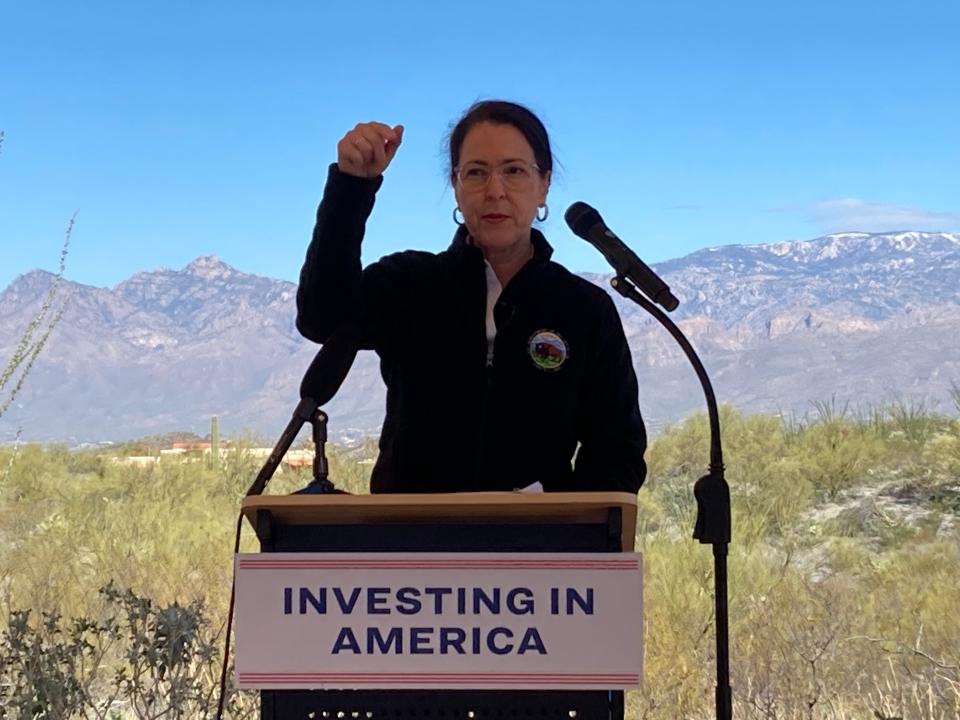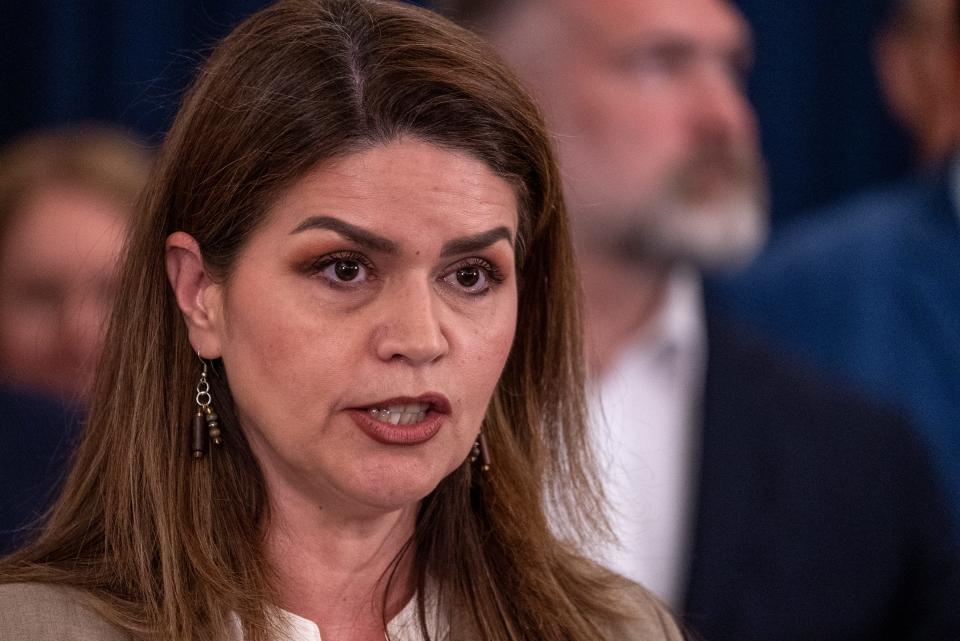Feds commit $10M to fight invasive bullfrogs and buffelgrass, restore Arizona lands
SAGUARO NATIONAL PARK — The U.S. Interior Department will infuse $10.3 million into efforts to restore Arizona lands and water this year, offering a particular boost to projects battling non-native species in this park on Tucson’s edge, officials said Wednesday.
The money comes from the Bipartisan Infrastructure Law and is meant to enhance local resilience in the face of climate change, the department said. It builds on about $5 million already dedicated to such projects in the state, and is part of $157 million in nationwide investments from the law, supporting 206 ecosystem restoration initiatives.
“Nature is our best ally in the fight against climate change,” said Shannon Estenoz, assistant secretary for fish, wildlife and parks, after a tour of the park’s buffelgrass control areas.

Buffelgrass, a nonnative grass that has taken over southern Arizona hillsides, endangers cactuses and other vegetation by crowding them out and intensifying wildfires that threaten both the landscape and homes. The park had already begun this work, but now will have the wherewithal to join forces with Organ Pipe Cactus National Monument and other parks to escalate the fight.
Protecting saguaros: How removing invasive buffelgrass from Arizona forests can reduce wildfire threats
Saguaro and eight other southwestern national parks will also use some of the money to build a bullfrog-removal program, said Andy Hubbard, program manager for the National Park Service’s Sonoran Desert Network. He called the combination of this latest cash infusion and previous ones from the Inflation Reduction Act and the Great American Outdoors Act a “once-in-a-generation” opportunity to address a backlog of needs in the parks.
“These investments allow us to do projects we just simply have not had capacity for in the past,” he said.
Money will help hunt down bullfrogs
American bullfrogs are native to the eastern United States and may have been introduced in the Southwest as game animals by those who savor frog legs, Hubbard said. Unfortunately, they eat native frogs and toads, snakes and birds, he said.
“They are amazing predators,” he said. “They eat anything.”
Frog infestations are especially bad at Tuzigoot National Monument in northern Arizona, he said, as well as Gila Cliff Dwellings National Monument in New Mexico. In Tucson, Hubbard said, bullfrogs in ponds or at golf courses migrate into the national park. The Park Service is teaming up with partners to hunt them down and to net tadpoles. Tucson Audubon will hire a scientist to help the work, and will also work with the University of Arizona.
The new funds also will help with seed collection and storage for native plants to be used in restoration projects, Estenoz said. The department had not broken down where all of the $10.3 million will go, but said it will be spread among multiple parks.
The U.S. Fish and Wildlife Service announced its part of the program in Arizona will include $7 million for mine hazard reduction and revegetation at three national wildlife refuges: Buenos Aires, Kofa and Cabeza Prieta.

Tucson Mayor Regina Romero thanked the Biden administration for helping locals with “transformational, historic investments in our land and water.” She described the region’s battles with buffelgrass as vital to the local culture and environment.
“The saguaro cactus is emblematic of Tucson,” she said. “It’s emblematic of the Southwest. It faces a direct threat from buffelgrass.”
The funding will help employ young tribal members on the project, she said, and will provide winter jobs for underserved communities. The work is labor-intensive, she said, requiring removal by the roots.
Brandon Loomis covers environmental and climate issues for The Arizona Republic and azcentral.com. Reach him at brandon.loomis@arizonarepublic.com.
Environmental coverage on azcentral.com and in The Arizona Republic is supported by a grant from the Nina Mason Pulliam Charitable Trust. Sign up for AZ Climate, our weekly environment newsletter, and follow The Republic environmental reporting team at environment.azcentral.com and @azcenvironment on Facebook and Instagram.
You can support environmental journalism in Arizona by subscribing to azcentral.com today.
This article originally appeared on Arizona Republic: Federal lands in Arizona get $10 million for restoration projects

